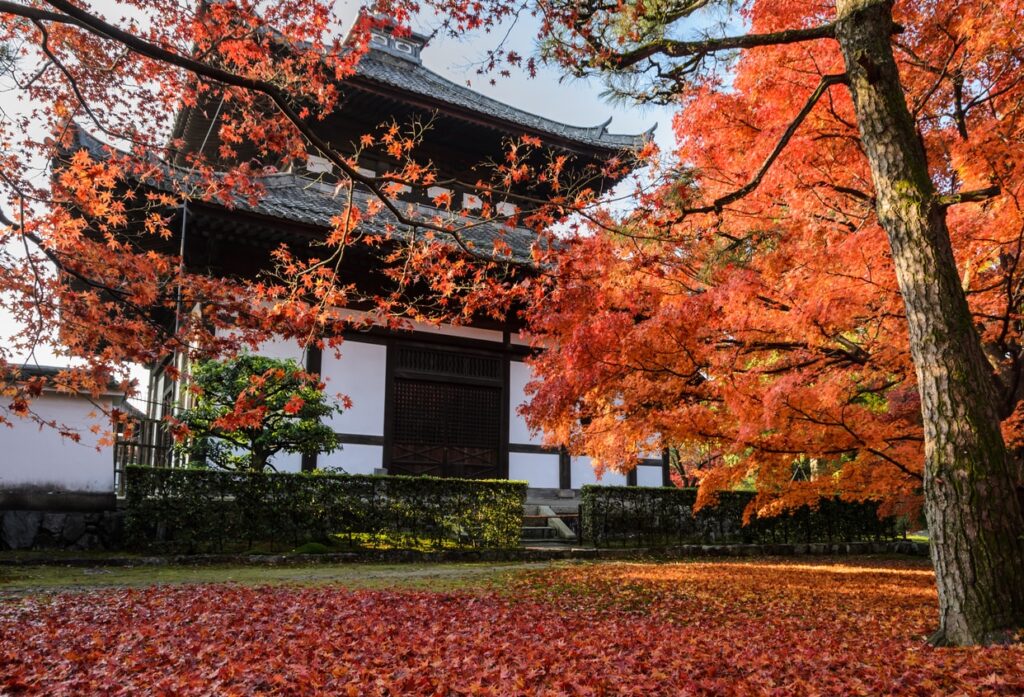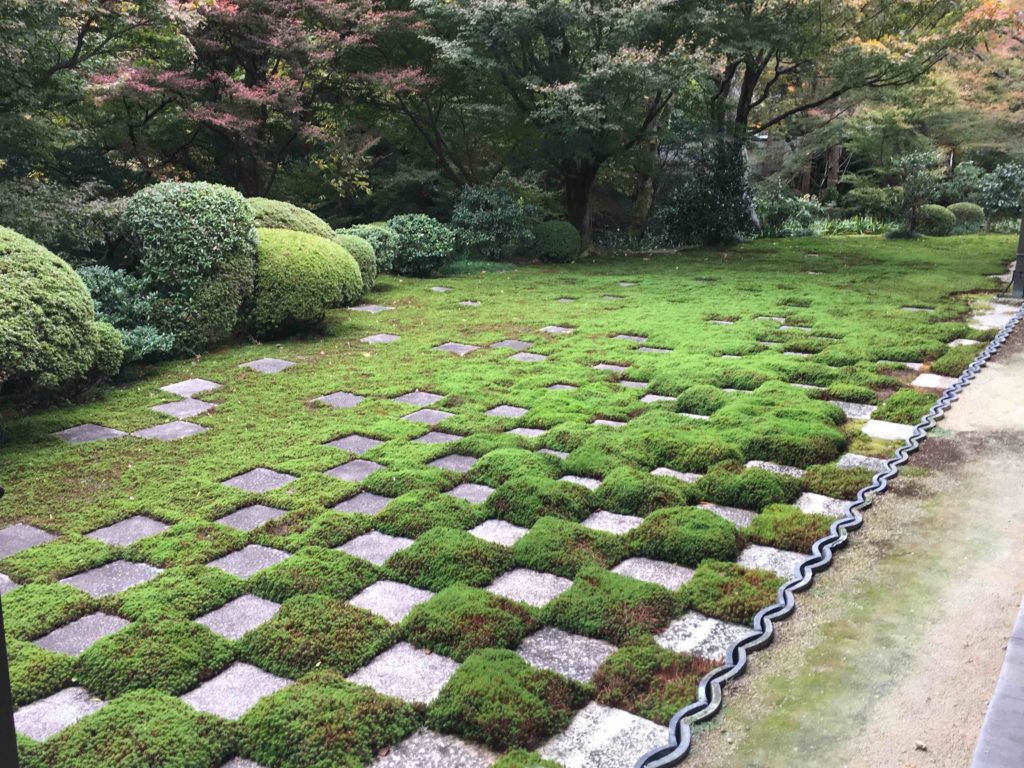Tofuku-ji Temple
Inspiring gardens and autumn madness at Kyoto’s oldest Zen temple.
Tofuku-ji Temple is arguably the spot for viewing the changing colors of the autumn leaves.
The main garden’s path takes you through a forest of maple trees and then up above it – via the famous Tsuten-kyo Bridge – so that you peer down on a blanket of red. It’s a breathtaking experience that draws equally breathtaking crowds during the high season. Yet, the various gardens of what is Kyoto’s oldest Zen temple are a delight all year round.

Bright red leaves blanket the grounds surrounding the temple.
Tofuku-ji was founded in 1236 by statesman Kujo Michiie, who wanted to establish in Kyoto a site comparable to the Nara temples Kofuku-ji and Todai-ji, which houses Japan’s biggest statue of the Buddha. Its name was taken from those. It is the head temple of the Tofuku-ji school of the Rinzai Sect of Zen Buddhism and took 19 years to complete. The spacious complex includes many sub-temples and is Kyoto’s largest Zen site.

Photo by: Kirsty Kawano Tofukuji Temple in autumn.
The Zen Hasso Gardens that surround the Abbot’s Hall were crafted in 1939. They include two pebble-and-rock dry gardens and two smaller ones that feature a delightful checkerboard design – one made of moss, the other of azalea shrubs. This area requires an entrance fee. The maple garden requires an admission fee of its own, and includes entrance to the garden of the attractive Kaisan-do Hall. Late November is the reddest season. Although they don’t attract the same crowds, the fresh green leaves of May are also beautiful.

Photo by: Kirsty Kawano The moss garden.
Although war and fires have led to the rebuilding of Tofuku-ji’s temple buildings over the years, survivors from the 14th century Muromachi period include the Zen-do meditation hall and the highly ecological lavatory block and bathing room, which once served more than a hundred priests.
Kyoto Museum of Traditional Crafts

Lastly, the temple’s exquisite 22-meter-high Sanmon gate is the oldest Zen main gate in Japan and is a designated national treasure.
For other autumn foliage hotspots within Kyoto, click here.
Trivia

Kyoto Museum of Traditional Crafts
Get your hands dirty — or just view thousands of years of traditional art for free.
MoreTopics: autumn, kyoto, shrines and temples


